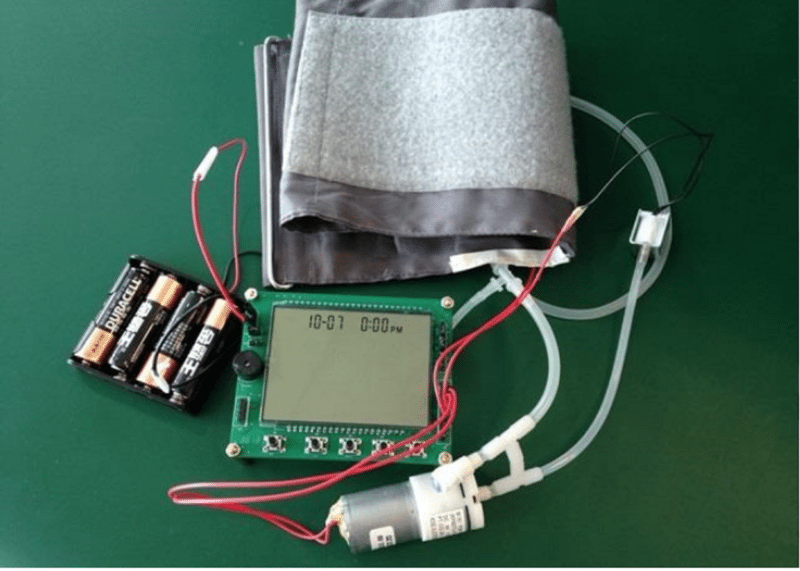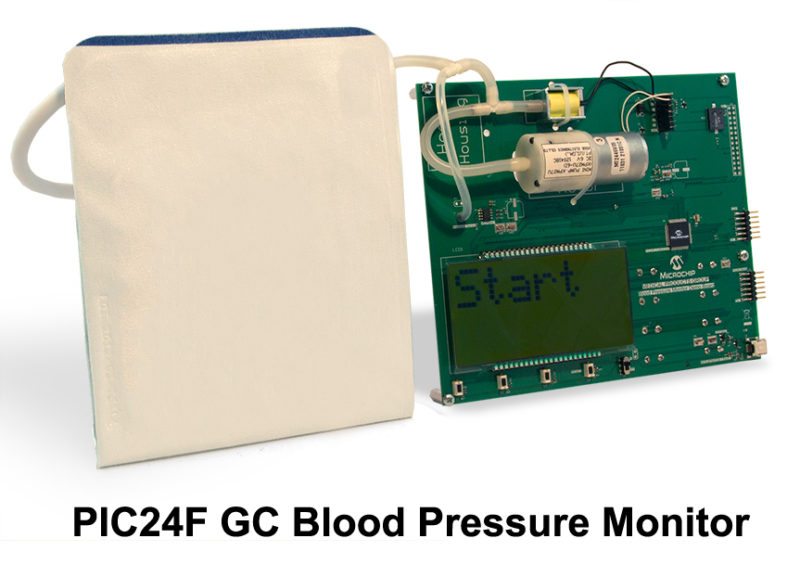A blood pressure (BP) meter or a device used to measure blood pressure is available in a number of models, ranging from professional monitors used in health care facilities to inexpensive, portable monitors used in homes for one-handed application. Read the reference designs below to know the detailed design of BP monitors:-
Ultra Low Power Blood Pressure And Heart Rate Monitor:
 This reference design demonstrates a battery-powered, portable device to monitor blood pressure and heart rate that works in low-power mode displaying date and time. The device is easy to use with two buttons. To measure blood pressure, a ‘measure’ button is provided and to look at historical blood pressure, a ‘memory’ button is provided. The device can store 80 measured records in its EEPROM. The design leverages the features of the ultra low-power MCU MSP430F6638 with LCD to remain in standby mode and save power. More on this Reference Design
This reference design demonstrates a battery-powered, portable device to monitor blood pressure and heart rate that works in low-power mode displaying date and time. The device is easy to use with two buttons. To measure blood pressure, a ‘measure’ button is provided and to look at historical blood pressure, a ‘memory’ button is provided. The device can store 80 measured records in its EEPROM. The design leverages the features of the ultra low-power MCU MSP430F6638 with LCD to remain in standby mode and save power. More on this Reference Design
Portable Blood Pressure Meter based on Low-power MCU:

This reference design describes how to develop a low-cost, low-power, handheld or portable blood pressure meter with user interface. This design can measure both pulse rate and blood pressure using the system-on-a-chip PIC24FJ128GC010 MCU. The MCU uses eXtreme Low Power (XLP) technology and provides 18nA deep sleep mode. The MCU drives the pump by sending a PWM signal. The cuff pressure signal and the oscillation signal are derived from the pressure sensor and sent to the ADC of the MCU for measurement. The results for blood pressure and pulse rate can be sent to an integrated LCD, USB and wireless interface. More on this Reference Design
Wireless Blood Pressure Monitor:
This reference design presents an intelligent and flexible handheld solution for arterial blood pressure measurement. The design is based on Flexis QE128 microcontrollers from Freescale that give the designers flexibility of expansion from low-end to high-end products. They allow designers to design one software and hardware platform for several projects in a modular way. A module can be added to create a new design. The software is non-blocking in which each module is treated as a separate task so that if one module stops running, others are not affected. The pressure variations in the cuff attached to the upper arm are used to produce the heartbeat signal. Using the heartbeat signal, a HCS08 determines the systolic blood pressure (SBP) and diastolic blood pressure (DBP). The system comes with many useful features like 4-language navigation menu, USB to download historical data, OLED display and wireless RF interface to communicate with other devices such as router. More on this Reference Design






